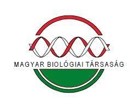Scale – pattern – habitat choice – life history: ecology of terrest-rial isopods (Isopoda, Oniscidea)
Abstract
Species of the suborder Oniscidea (Isopoda) are the most successful invaders of terrestrial habitats within the crustacean class. They are excellent models of terrestrial adaptation. Functionally, they are decomposers of the soil ecosystem. The most important results and conclusions summarized in the MTA doctoral dissertation: Regularities can be recognized in the distribution of species – developed on different scales and due to different background reasons. There is a latitudinal trend in Europe, which means a decreasing number of species north of the Mediterranean and a change in the biogeographical/ecological character of the species. The number of species and the degree of endemism are high in Mediterranean regions. The nature of the habitats of a geographical region determines its species richness and the naturalness of the species. We have expanded the interpretability of the species richness and diversity indices with indices that can be used to classify species and communities. There is a close relationship between a habitat and its isopod fauna. Species can be classified based on their habitat, ecological needs and tolerance, or vice versa: the naturalness and disturbance of a habitat can be judged based on the species living there. Human activity plays a major role in the spread of species. The settlement of introduced species in cities is regular and decisive, causing biotic homogenization. There is a correlation between the morphological character of species and their ecological needs. The intra- and interspecific dynamics of populations differ in their life history strategies. Key environmental factors determine the temporal development of activity density. Female size and number of offspring are closely correlated, fecundity decreases over time regardless of female size.
References
BRERETON J.L.G. 1957. The distribution of woodland isopods. Oikos, 8: 85–106. https://doi.org/10.2307/3564994
CAUBET Y., JUCHAULT P. & MOCQUARD J-P. 1998. Biotic triggers of female reproduction in the terrest-rial isopod Armadillidium vulgare Latr. (Crustacea Oniscidea). Ethology, Ecology & Evolution, 10: 209–226. https://doi.org/10.1080/08927014.1998.9522853
CSONKA D., HALASY K., MRAK P., ŠTRUS J. & HORNUNG E. 2012. Armadillidium-fajok (Isopoda: Onis-cidea) élőhelyi adaptációjának morfológiai háttere. Természetvédelmi Közlemények, 18: 115–126.
CSONKA D., HALASY K., SZABÓ P., MRAK P., ŠTRUS J. & HORNUNG E. 2013. Eco-morphological studies on pleopodal lungs and cuticles in Armadillidium species (Crustacea, Isopoda, Oniscidea). Arthro-pod Structure & Development, 42(3): 229–235. https://doi.org/10.1016/j.asd.2013.01.002
CSONKA D., HALASY K., BUCZKÓ K.. & HORNUNG E. 2018. Morphological traits - desiccation tolerance – habitat characteristics: a possible key for distribution in woodlice (Isopoda: Oniscidea). Zookeys, 801: 481–499. https://doi.org/10.3897/zookeys.801.23088
DE'ATH G. 2002. Multivariate regression trees: a new technique for modeling species-environment rela-tionships. Ecology 83: 1105–1117.
https://doi.org/10.1890/0012-9658(2002)083[1105:MRTANT]2.0.CO;2
EDNEY E.B., ALLEN W. & MCFARLANE J. 1974. Predation by terrestrial isopods. Ecology, 55: 428–433. https://doi.org/10.2307/1935231
GUNNARSON T. & TUNLID A. 1987. Recycling of fecal pellets in isopods: microorganisms and nitrogen compounds as potential food for coprophagous Oniscus asellus L. In: STRIGANOVA B.R. (ed.): Soil Fauna and Soil Fertility. Proc. 9th Int. Coll. on Soil Zoology, Moscow, 1985. Nauka, Moscow, p. 71.
HASSALL M. & RUSHTON S.P. 1982. The role of coprophagy in the feeding strategies of terrestrial isopods. Oecologia (Berl), 53: 374–381. https://doi.org/10.1007/BF00389017
HASSALL M., TURNER J.G. & RANDS M.R.W. 1987. Effects of terrestrial isopods on the decomposition of woodland leaf litter. Oecologia, 72: 597–604. https://doi.org/10.1007/BF00378988
HORNUNG E. 2011. Evolutionary adaptation of oniscidean isopods to terrestrial life: Structural – physio-logical – behavioural aspects. Terrestrial Arthropod Reviews, 4(2): 95–130. https://doi.org/10.1163/187498311X576262
HORNUNG E. 2020. Skála – mintázat – élőhelyválasztás – életmenet: a szárazföldi ászkarákok (Isopo-da, Oniscidea) ökológiája. Akadémiai nagydoktori mű, Állatorvostudományi Egyetem, 155 pp. https://real-d.mtak.hu/1255/
HORNUNG E. & WARBURG M.R. 1995. Isopod distribution at different scaling levels. In: ALIKHAN M.A. (ed.) Terrestrial isopod biology Crustacean Issues 9, Balkema Publ., Rotterdam, pp. 83–95.
HORNUNG E., VILISICS F. & SZLÁVECZ K. 2007. Szárazföldi ászkarák (Isopoda, Oniscidea) fajok tipizá-lása hazai előfordulási adatok alapján (különös tekintettel a sikeres megtelepedőkre). Természetvé-delmi Közlemények, 13: 47–57.
HORNUNG E. VILISICS F. & SÓLYMOS P. 2008. Low alpha and high beta diversity in terrestrial isopod assemblages in the Transdanubian region of Hungary. In ZIMMER M, CHARFI-CHEIKHROUHA & TA-ITI S. (eds): Proceedings of the International Symposium of Terrestrial Isopod Biology, ISTIB-7. Shaker Verlag, Aachen, Germany, pp. 1–12.
http1: https://www.r-project.org: R: The R Project for Statistical Computing – utolsó elérés 2024. 11. 24. – utolsó elérés: 2024. 11. 24.
http2: https://podani.web.elte.hu/SYN2000.html – utolsó elérés: 2024. 11. 24.
http3: http//mrfa.r-forge.r-project.org – utolsó elérés: 2024. 11. 24.
LEFEBVRE F. 2002. Stratégies de reproduction chez les crustacés Isopodes terrestres. Rapport de thèse. Université de Poitiers. 161 pp.
MONMONIER M. 2010. Maximum-Difference Barriers: An Alternative Numerical Regionalization Method. Geographical Analysis, 5(3): 245–261. https://doi.org/10.1111/j.1538-4632.1973.tb01011.x
PARIS O.H. 1963. The ecology of Armadillidium vulgare (Isopoda: Oniscoidea) in California grassland: food, enemies and weather. Ecological Monograph, 33: 1–22. https://doi.org/10.2307/1948475
PARIS O.H. & SIKORA A. 1967. Radiotracer analysis of the trophic dynamics of natural isopod populati-ons. In: PETRUSEWICZ K. (ed.): Secondary productivity of terrestrial ecosystems (principles and methods), vol. II. Institute of Ecology, Polish Academy of Sciences, Warsaw, pp 741–771.
POBOZSNY M. 1978. Nahrungsansprüche einiger Diplopoden- und Isopoden-Arten in mesophilen Lau-bwäldern Ungarns. Acta Zoologica Academiae Scientiarum Hungaricae, 24: 397–406.
RABATIN S.C. & STINNER B.R. 1989. The Significance of Vesicular–Arbuscular Mycorrhizal Fungal–Soil Macroinvertebrate Interactions in Agroecosystems. Agriculture, ecosystems & environment, 27(1–4): 195–204. https://doi.org/10.1016/0167-8809(89)90085-6
SASKA P. 2008. Granivory in terrestrial isopods. Ecological Entomology, 33(6): 742–747. https://doi.org/10.1111/j.1365-2311.2008.01026.x
SCHMALFUSS H. 1984. Eco-morphological strategies in terrestrial isopods. The Biology of Terrestrial Isopods. Symposia of Zoological Society London, 53: 49–63.
SFENTHOURAKIS S. & HORNUNG E. 2018. Isopod distribution and climate change. ZooKeys 801: 25–61. https://doi.org/10.3897/zookeys.801.23533
SÓLYMOS P., VILISICS F. & HORNUNG E. 2008. Terepi adatlap a hazai epigeikus makrogerinctelenek el-terjedésének és élőhelyi preferenciájának vizsgálatára. Állattani Közlemények, 98(2): 39–46.
SZLAVECZ K. 1993. Needle litter consumption by two terrestrial isopods, Protracheoniscus amoenus (C.L.Koch), and Cylisticus convexus (de Geer) (Isopoda, Oniscidea). Pedobiologia, 37: 57–64. https://doi.org/10.1016/S0031-4056(24)00086-6
SZLAVECZ K., VILISICS F., TÓTH Z. & HORNUNG E. 2018. Terrestrial isopods in urban environments: an overview. ZooKeys, 801: 97–126. https://doi.org/10.3897/zookeys.801.29580
VILISICS F. & HORNUNG E. 2008. A budapesti szárazföldi ászkarákfauna (Isopoda: Oniscidea) kvalitatív osztályozása. Állattani Közlemények, 93(2): 3–16. https://doi.org/10.1007/s11252-009-0097-8
VILISICS F. & HORNUNG E. 2009. Urban areas as hot-spots for introduced and shelters for native isopod species. Urban Ecosystems, 12: 333–345.
WALLWORK J.A. 1970. Ecology of Soil Animals. McGraw-Hill, New York, 283 pp.
WANG Y., BRUNE A. & ZIMMER M. 2007. Bacterial symbionts in the hepatopancreas of isopods: diver-sity and environmental transmission. Microbiol Ecology, 61: 141–152. https://doi.org/10.1111/j.1574-6941.2007.00329.x
WARBURG M.R. 1993. Evolutionary biology of land isopods. Springer, Berlin-Heidelberg, 159 pp. https://doi.org/10.1007/978-3-662-21889-1







